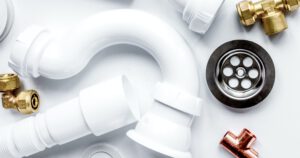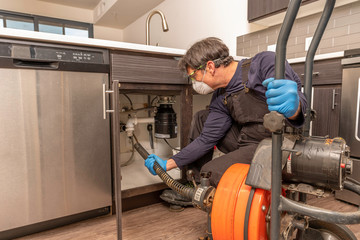Plumbing involves the use of pipes, valves, fittings, tanks, and other apparatuses to convey fluids. Its range of applications includes domestic, commercial, and industrial settings. It is a highly technical career with a high demand for workers. Despite its broad scope, there are a number of different job titles within this field.

When considering the installation of a DWV system in your plumbing system, you will need to consider a few factors that will affect its functionality. For instance, the slope of the building’s plumbing system, the materials and fixtures used, and the types of chemicals and cleaners being used may all have an impact on the system’s performance. Additionally, the type of occupancy of the building will determine how often the DWV system needs to be maintained. As such, the maintenance plan you create for the DWV system should include these factors.
A DWV system consists of a series of pipes that connect drain pipes throughout a home. These pipes help wastewater flow out of a building as quickly as possible. They are connected to the main stack, which allows air to flow through the pipe. A DWV system can also be made up of a single vent stack located on the roof of the building. In addition to pipes, a DWV system can also include traps at each drain. These traps prevent odor-causing gases from retracting back into the drain.
DWV systems also require various sized pipes and fittings. Schedule 40 PVC pipe is used in the construction of DWV systems and is available in a variety of different pitches from 90 to 22.5 degrees. It comes in both inner and outer diameter fitments. Pipes used in a DWV system should be at least ten feet long.
There are several different types of pipes in plumbing. For example, there are copper pipes, which are often used in older homes. But, because copper is so expensive, the demand for copper pipes has fallen dramatically. These days, alternative materials like PEX and stainless steel are preferred. If you need to install new pipes in your home, there are several things you should know.
First, you need to know that pipes are made from many different materials. The most common ones are copper, CPVC, PEX, and UPVC. Each of these materials has its own benefits and disadvantages. To make a selection, look for the material that will be most durable for your particular needs. If you’re looking for a more durable pipe, you can opt for PEX or cross-linked polyethylene.
Another type of pipe is ABS. ABS is made of acrylicitrile-butadiene-styrene and is used in above and below-ground plumbing systems. This material can withstand higher pressures. Black cast iron pipes, on the other hand, are commonly used to carry natural gas and propane. Unmarked black PVC pipe is also available. These types of pipes are distinguished by their aesthetics and functionality.
Copper pipe was once the only material used in residential plumbing. This material was durable, cheap, and easy to weld. However, as lead has been found to cause health issues, more homeowners began switching to alternatives. Nowadays, copper and specialized plastics are the preferred materials for water pipes in our homes. Older homes, though, may still have lead pipes. If you live in a home built before 1950, you should definitely check the pipes.
There are different types of pipe fittings available on the market. They are made from several different materials and are attached to pipes by soldering, welding, adhesives, or threading. Some of these fittings are made from copper, brass, or PVC, and others use threaded connections.
Plastic pipe fittings are also available. The most common types of plastic pipe fittings are made from poly-vinyl-chloride (PVC). These are a rigid black plastic that is used for drainage and supply. ABS is an economical alternative to PVC and has superior chemical resistance.
Bushings are another common type of pipe fitting. They can be used in all types of plumbing. They are used to connect three pieces of pipe. They are typically used on water supply lines and can also create branch lines. Plumbing professionals describe these fittings according to their line and branch dimensions. You can choose the right kind for your plumbing needs.
Brass is another common material for plumbing fittings. It is a durable and reliable material that can be used for a long time. Brass is also highly malleable, which makes it easier to change and mold than most other materials. It can be polished or lacquered, and it can be nickel-plated or antique-finished.


